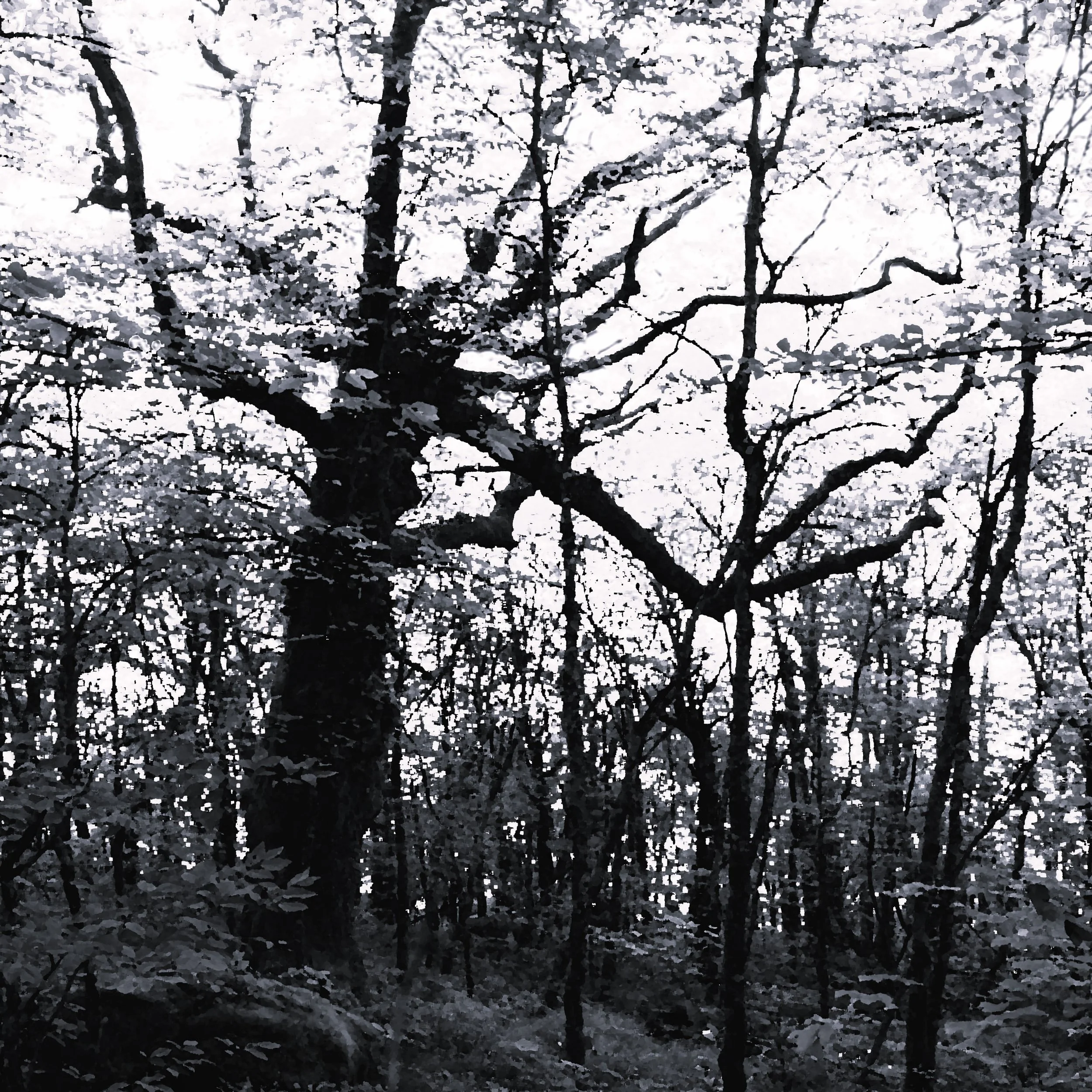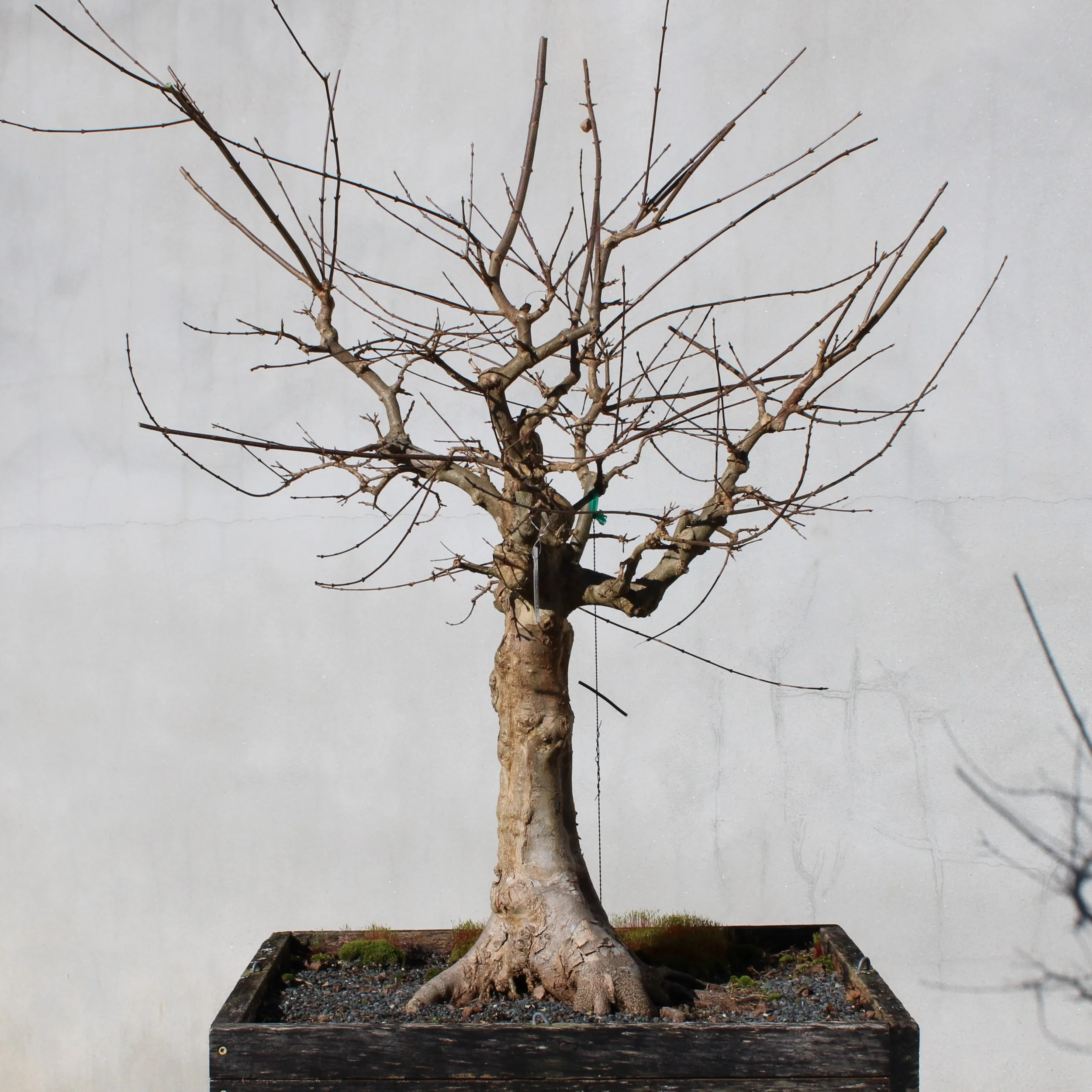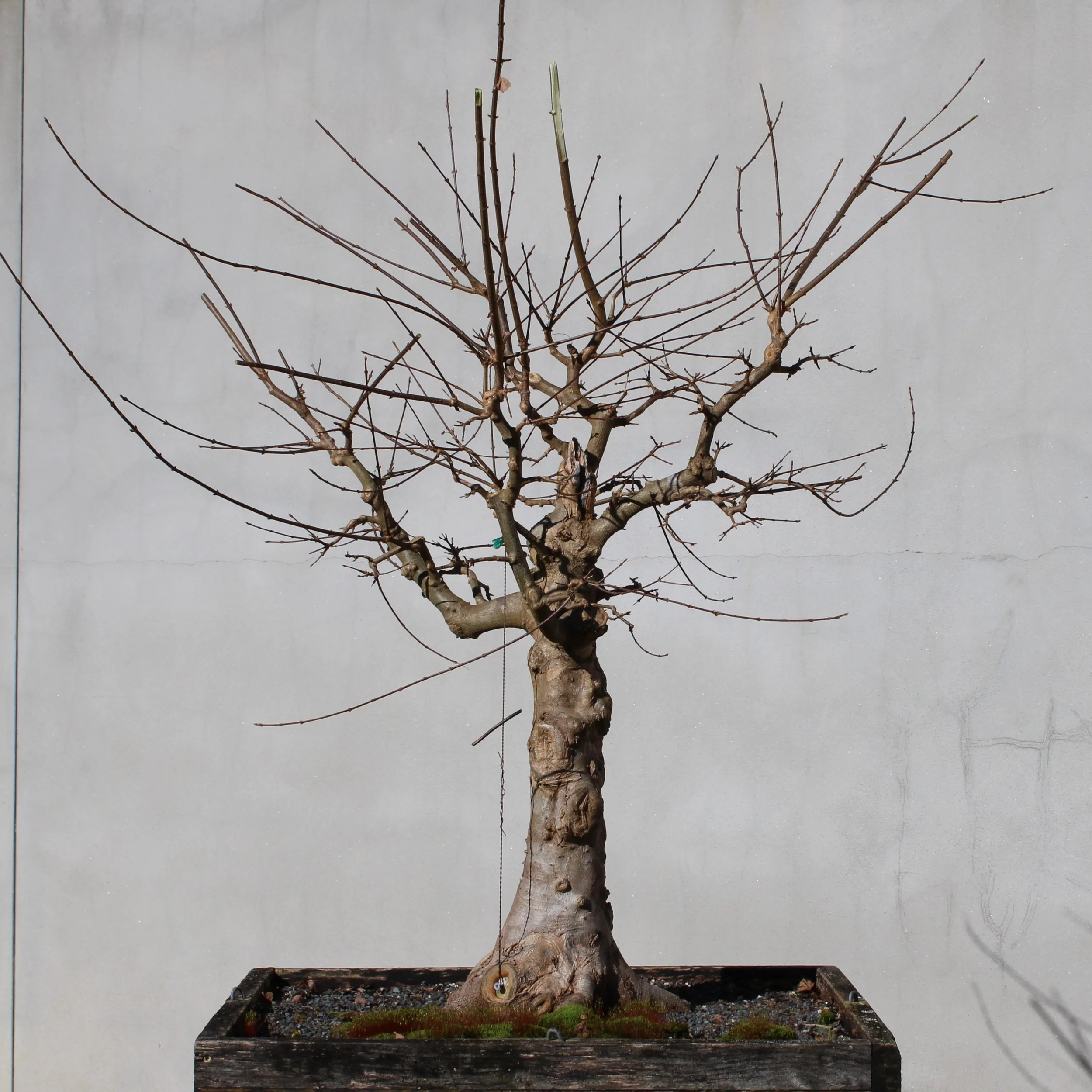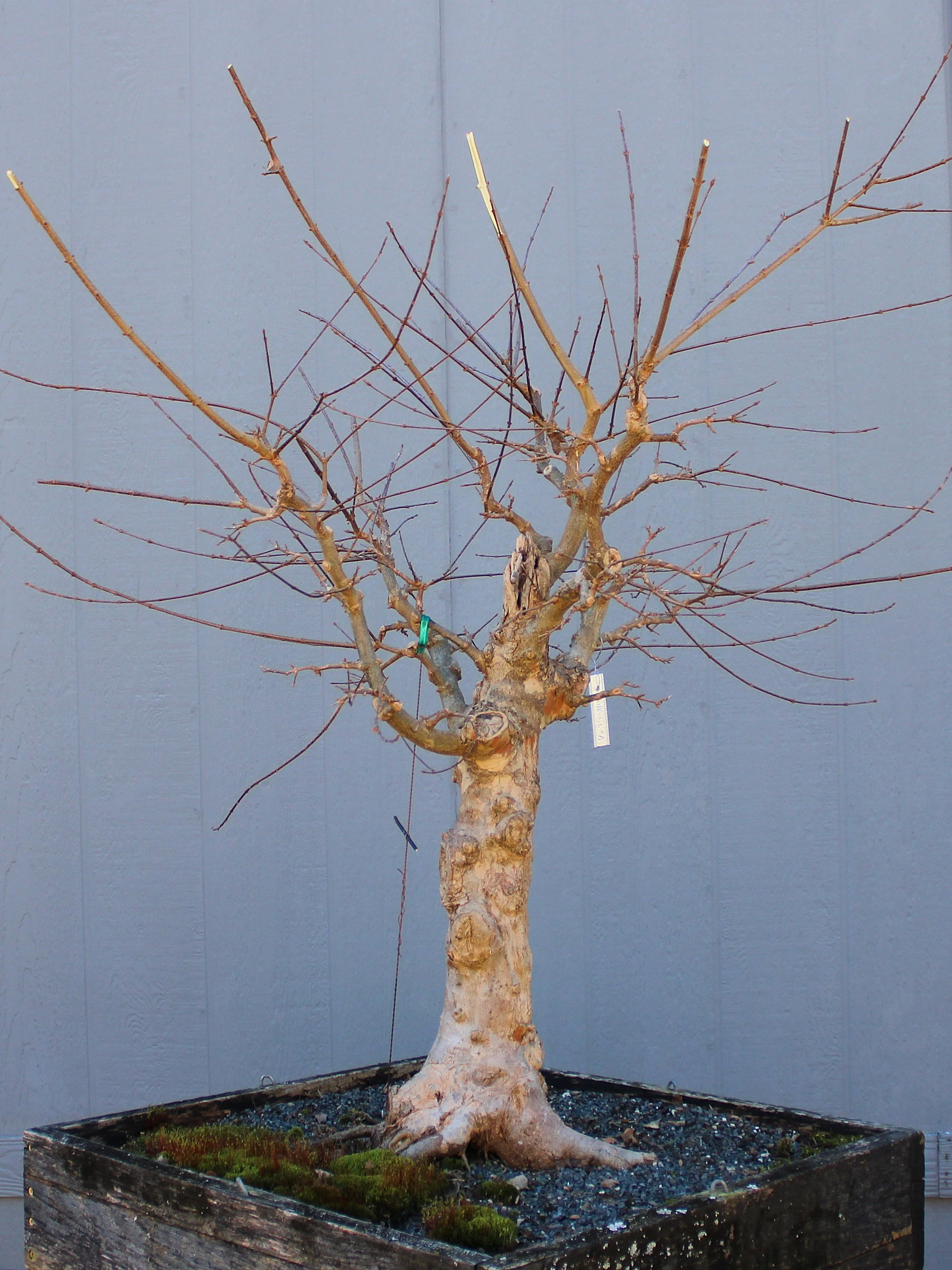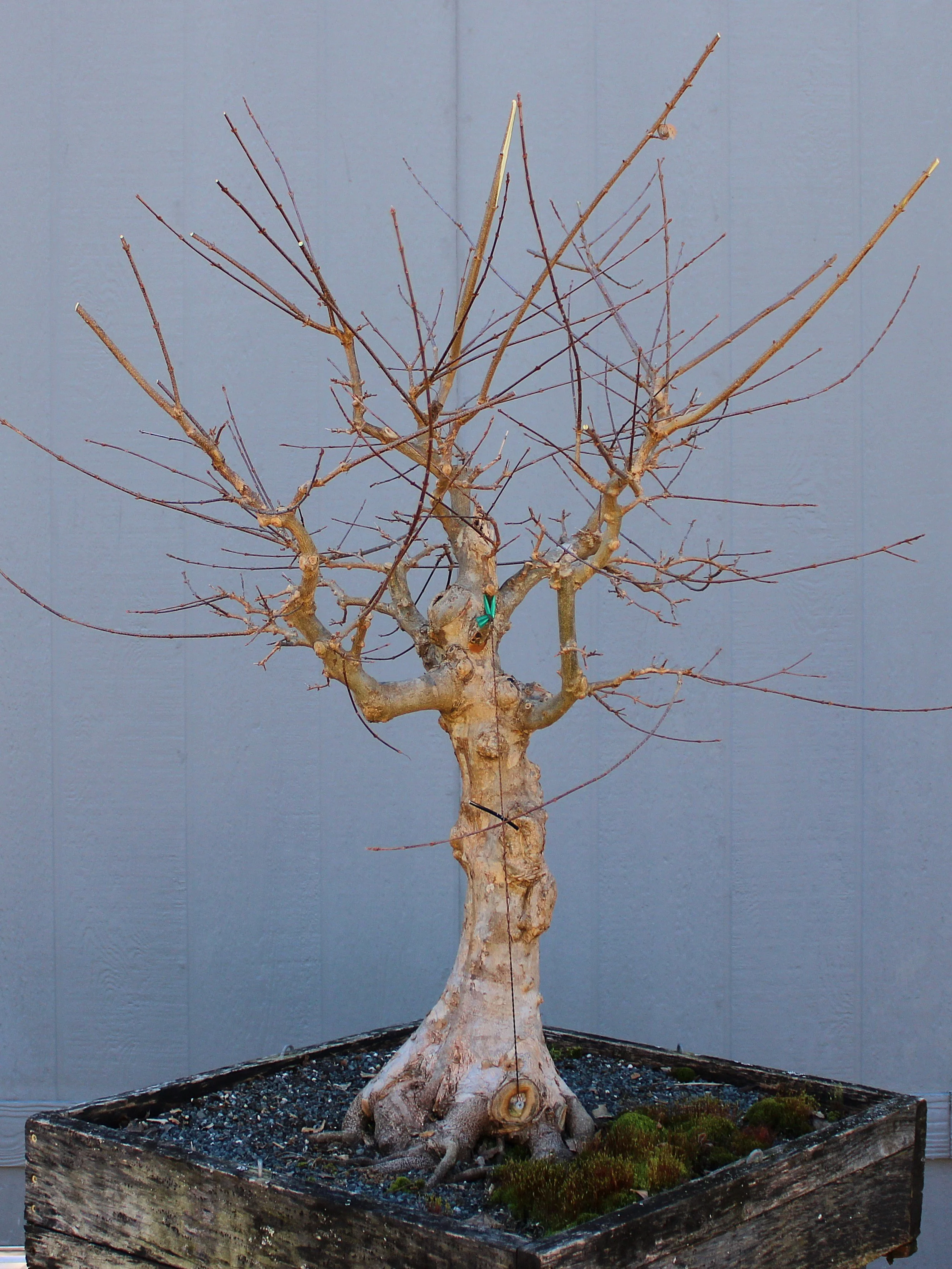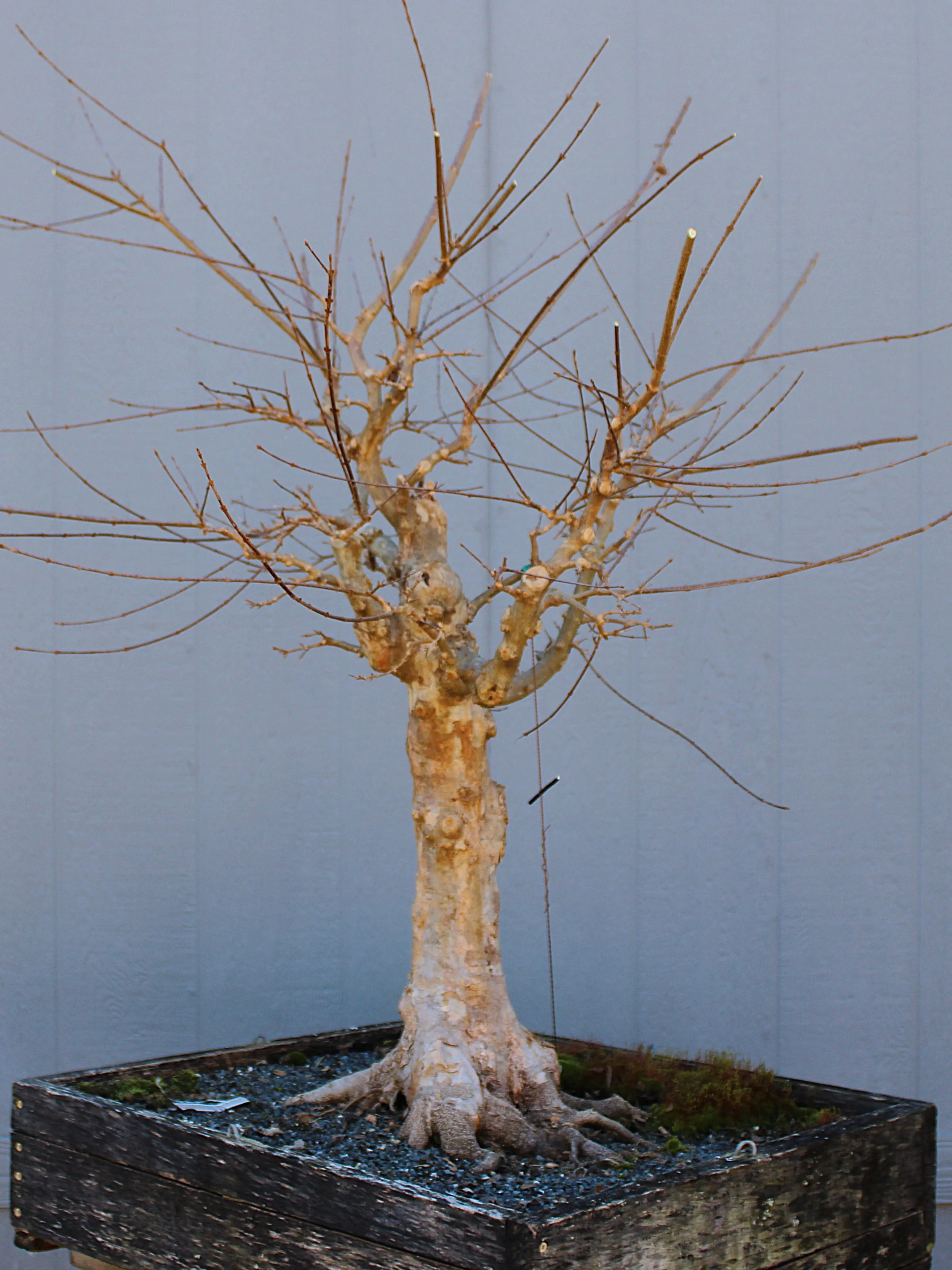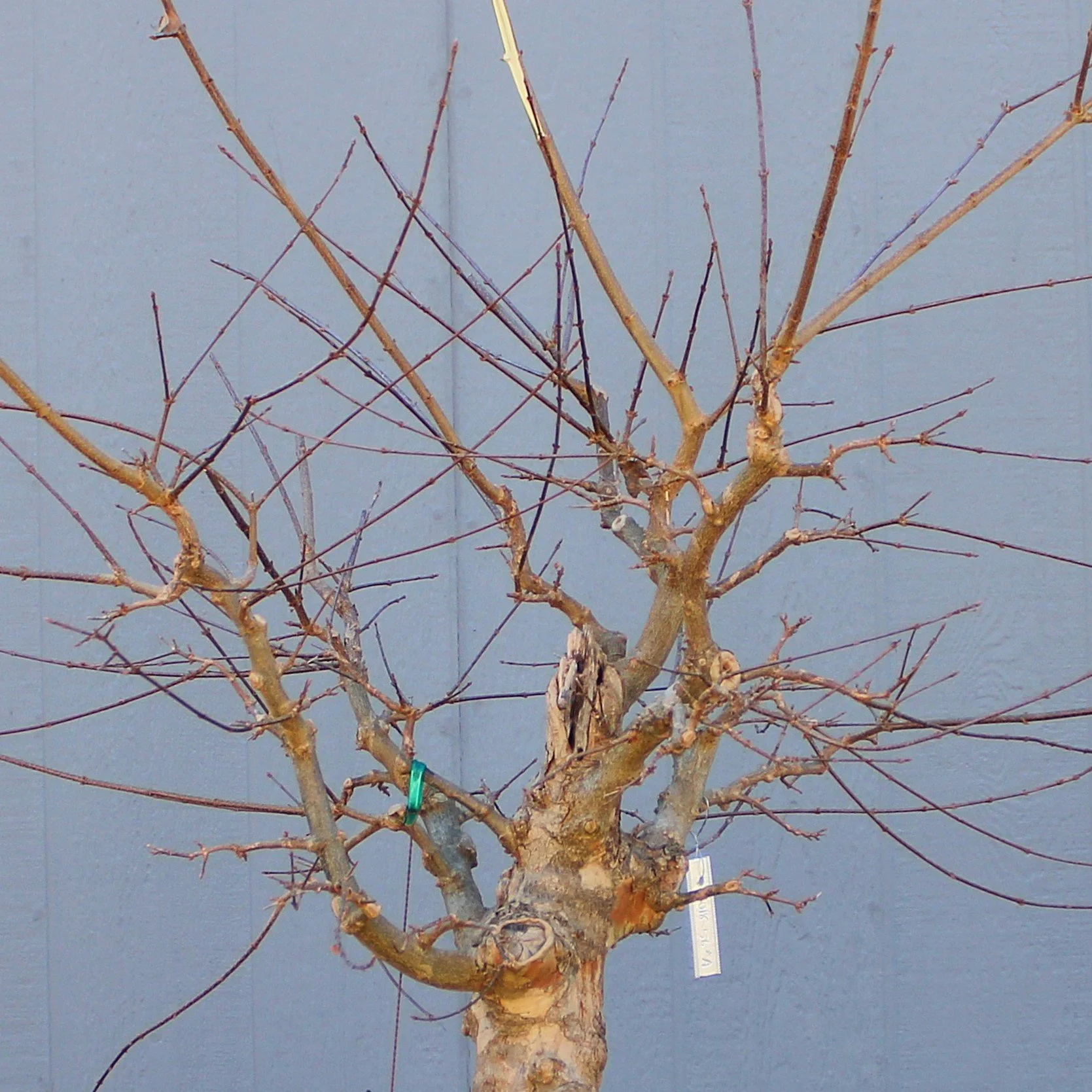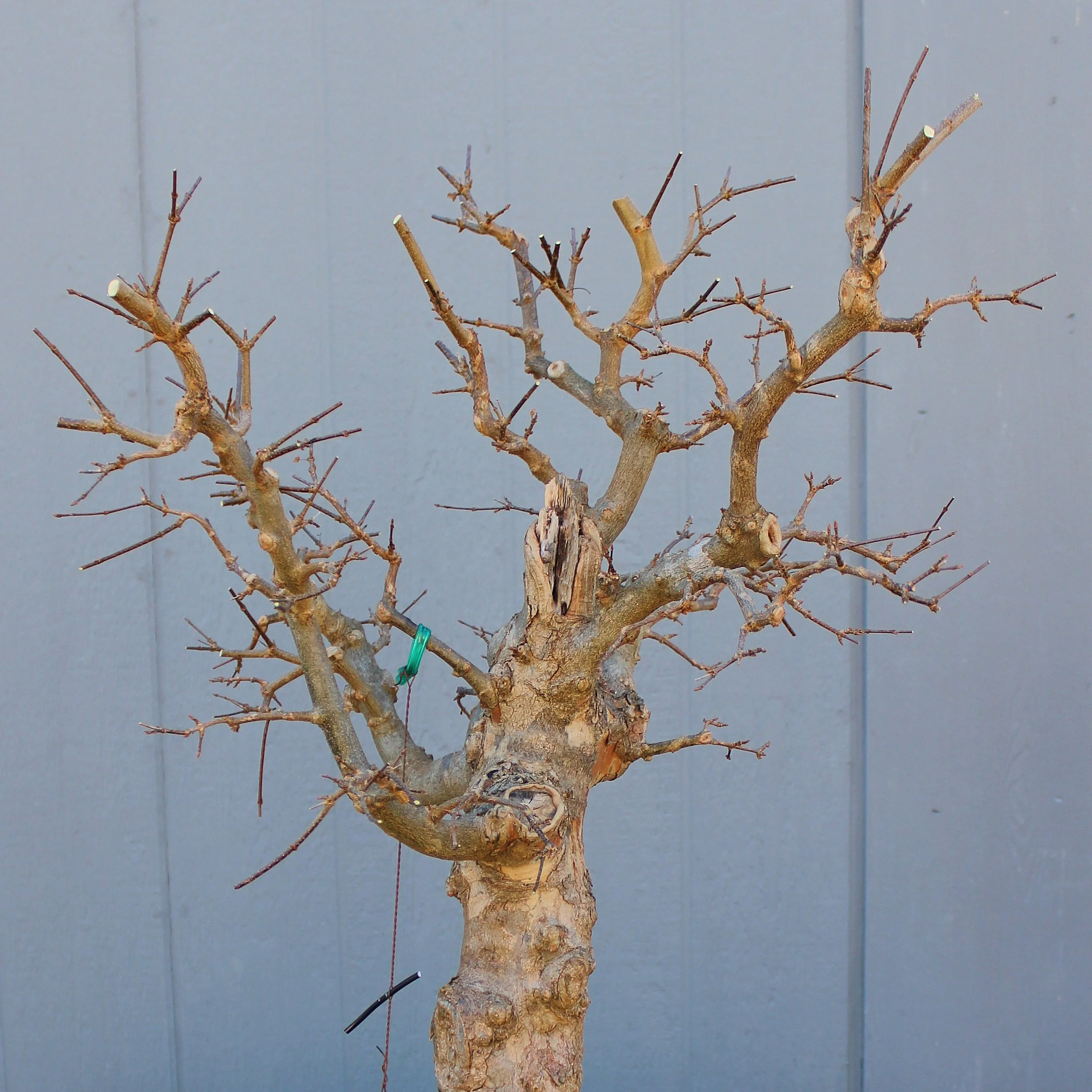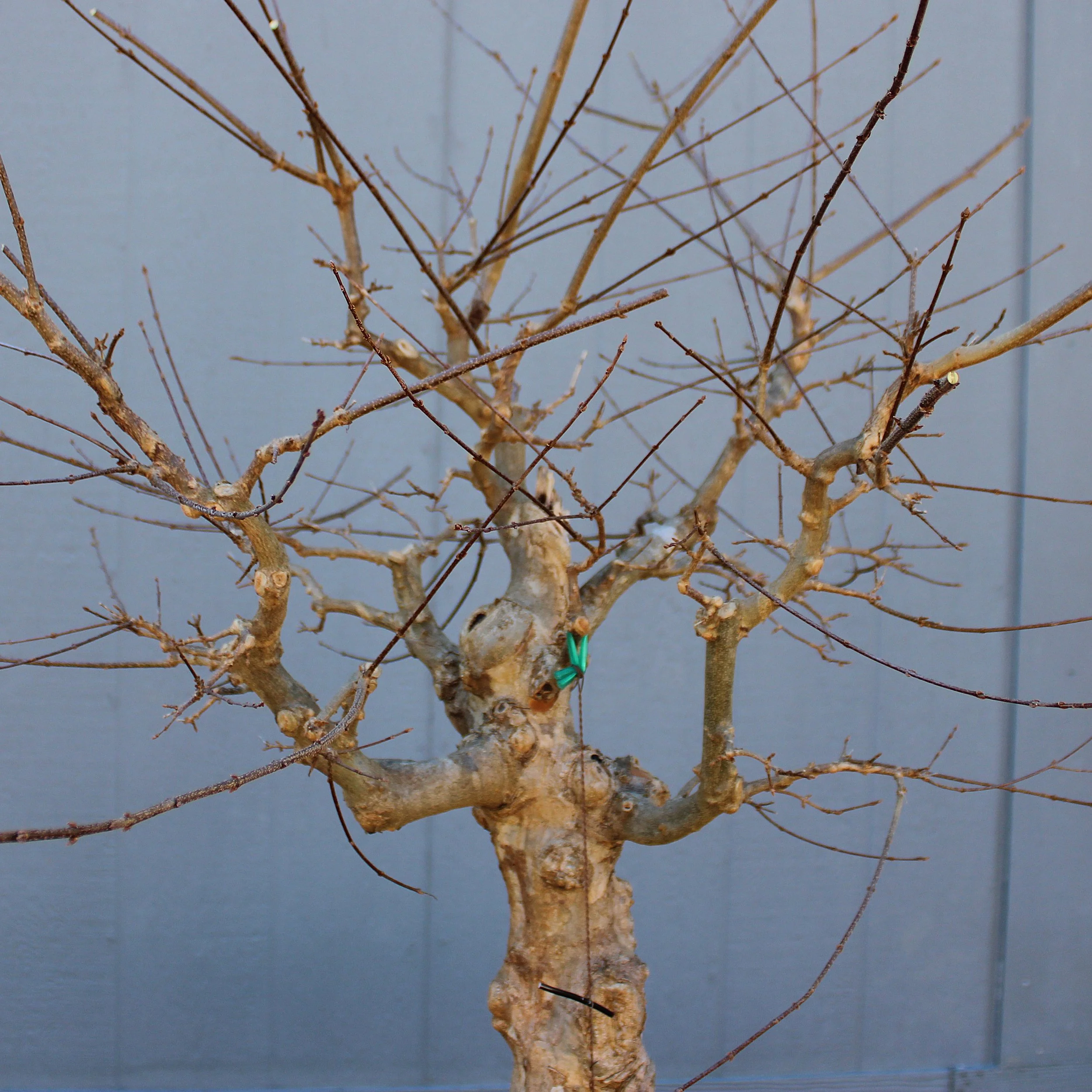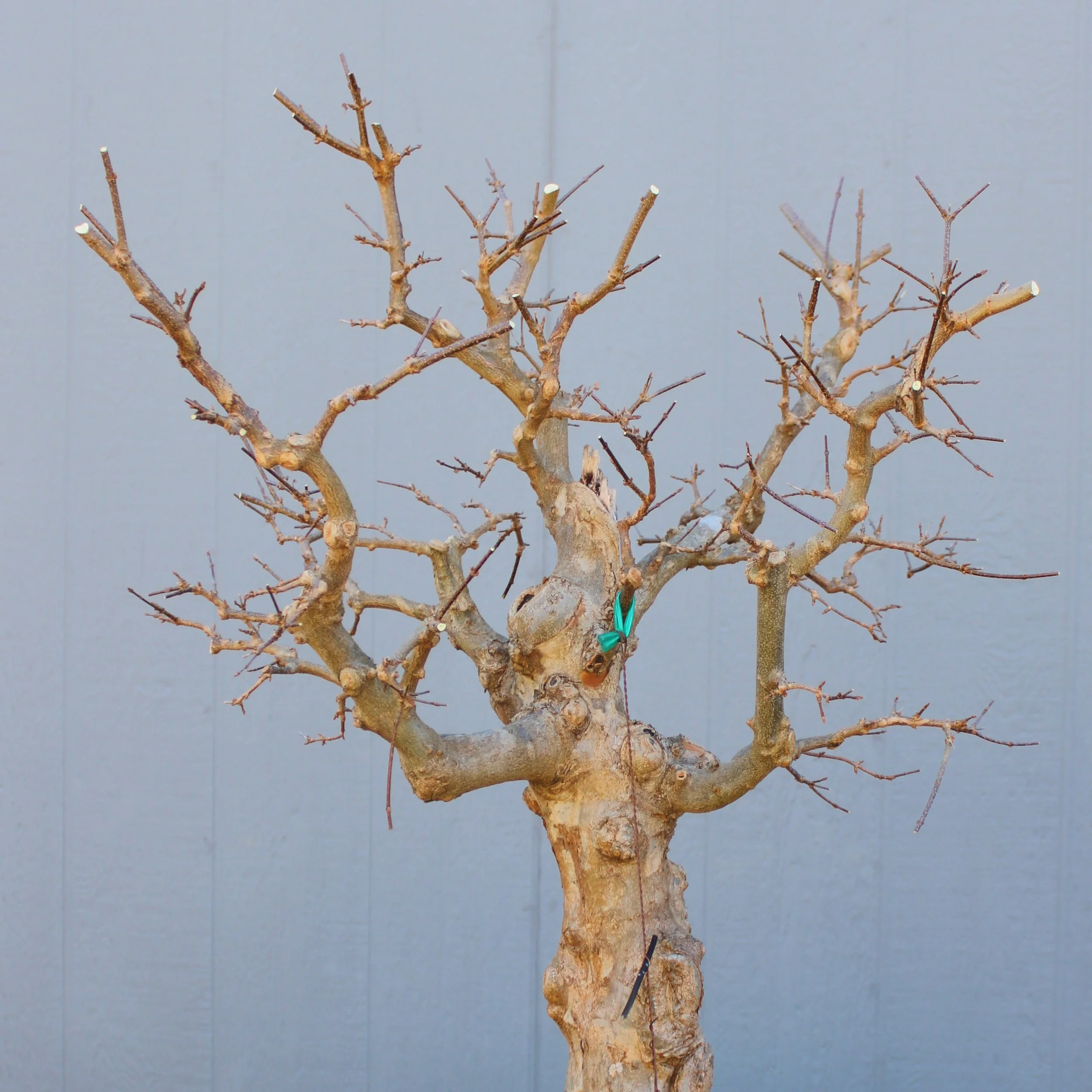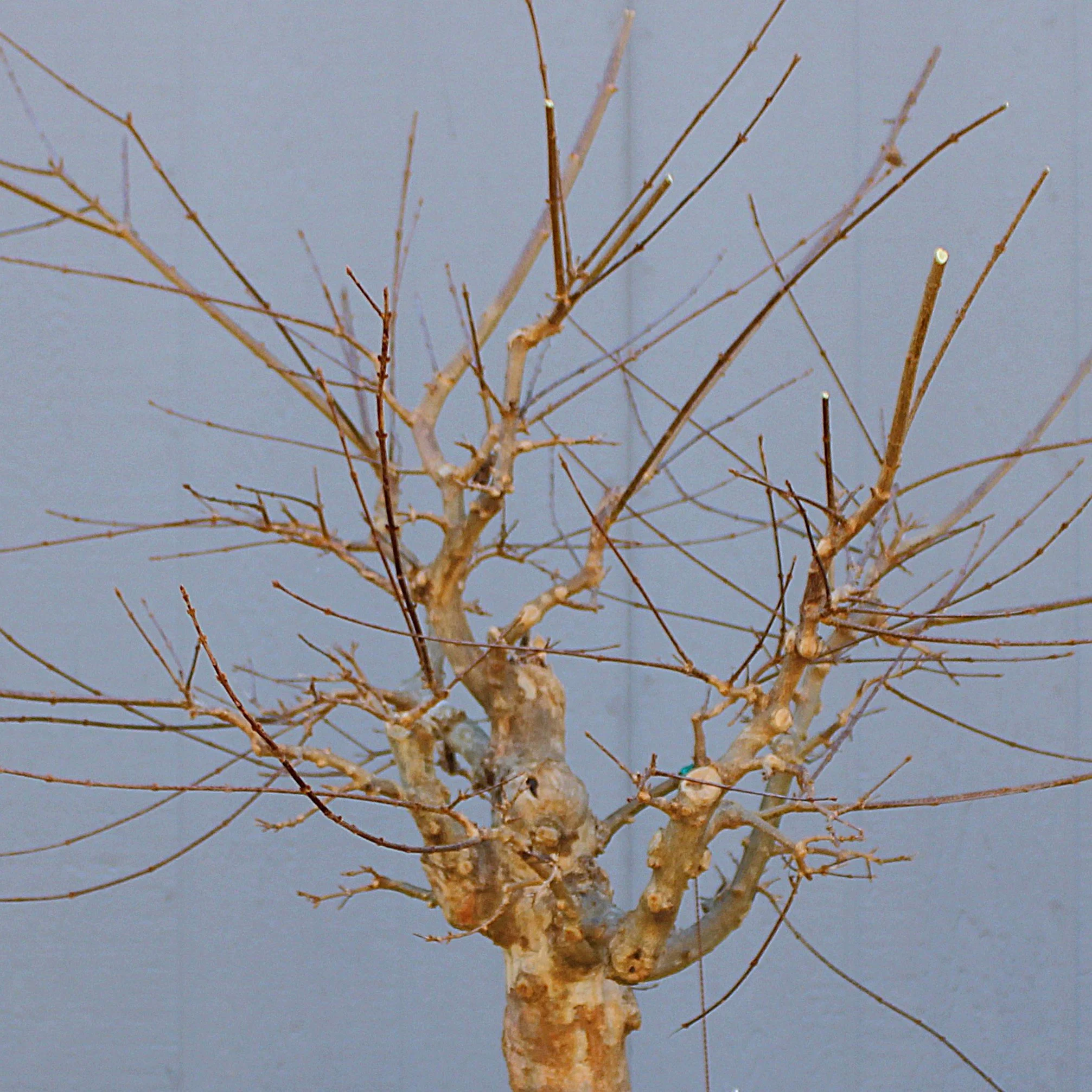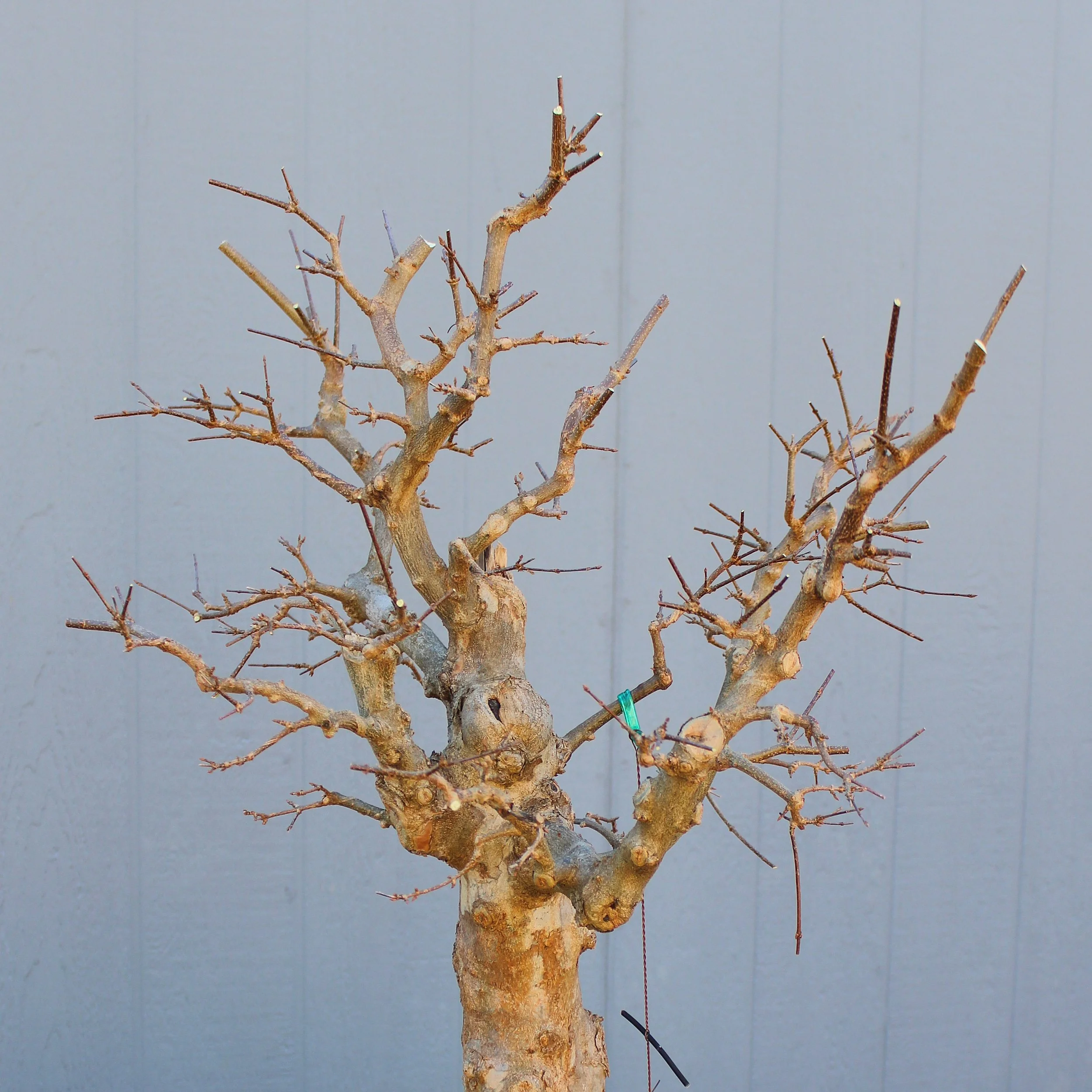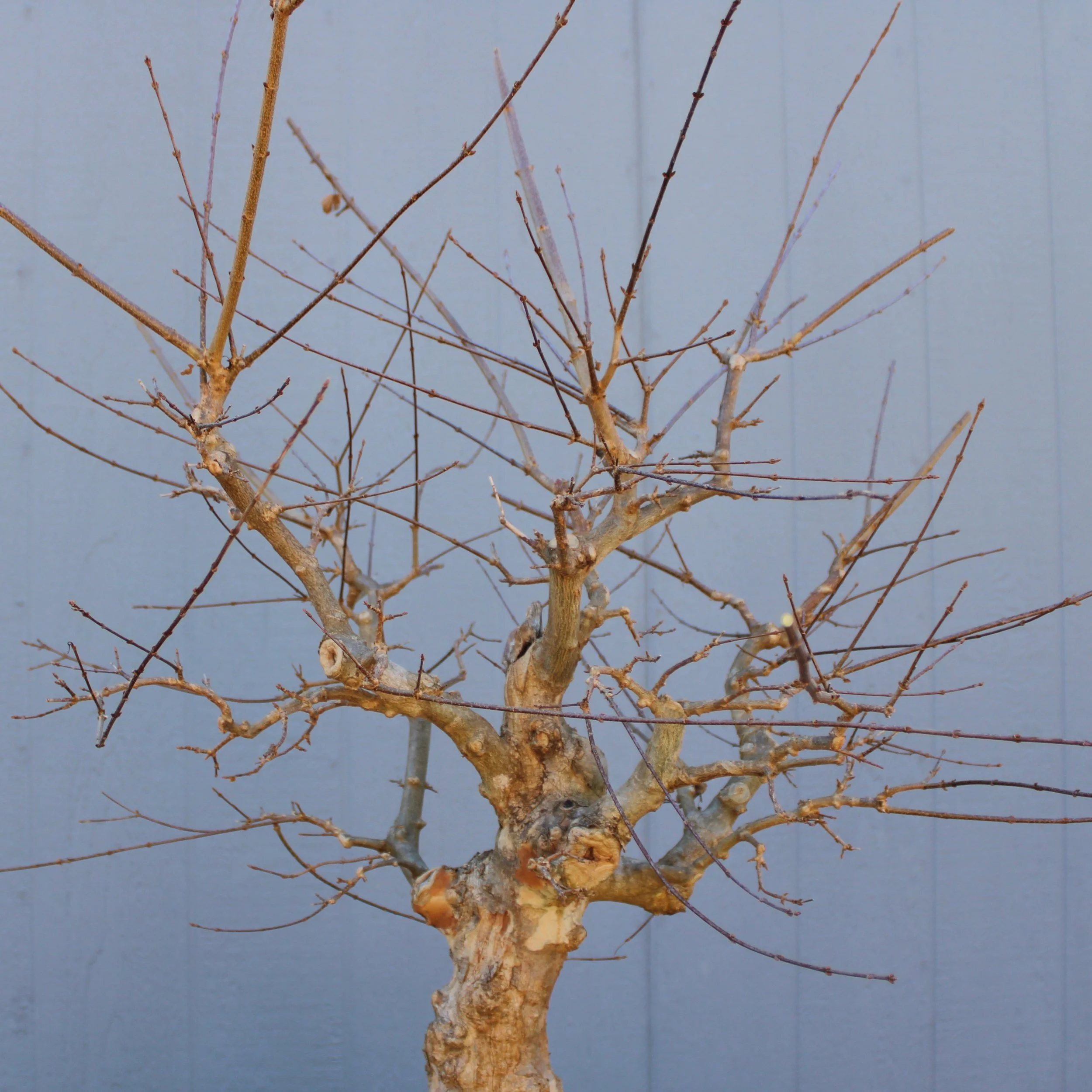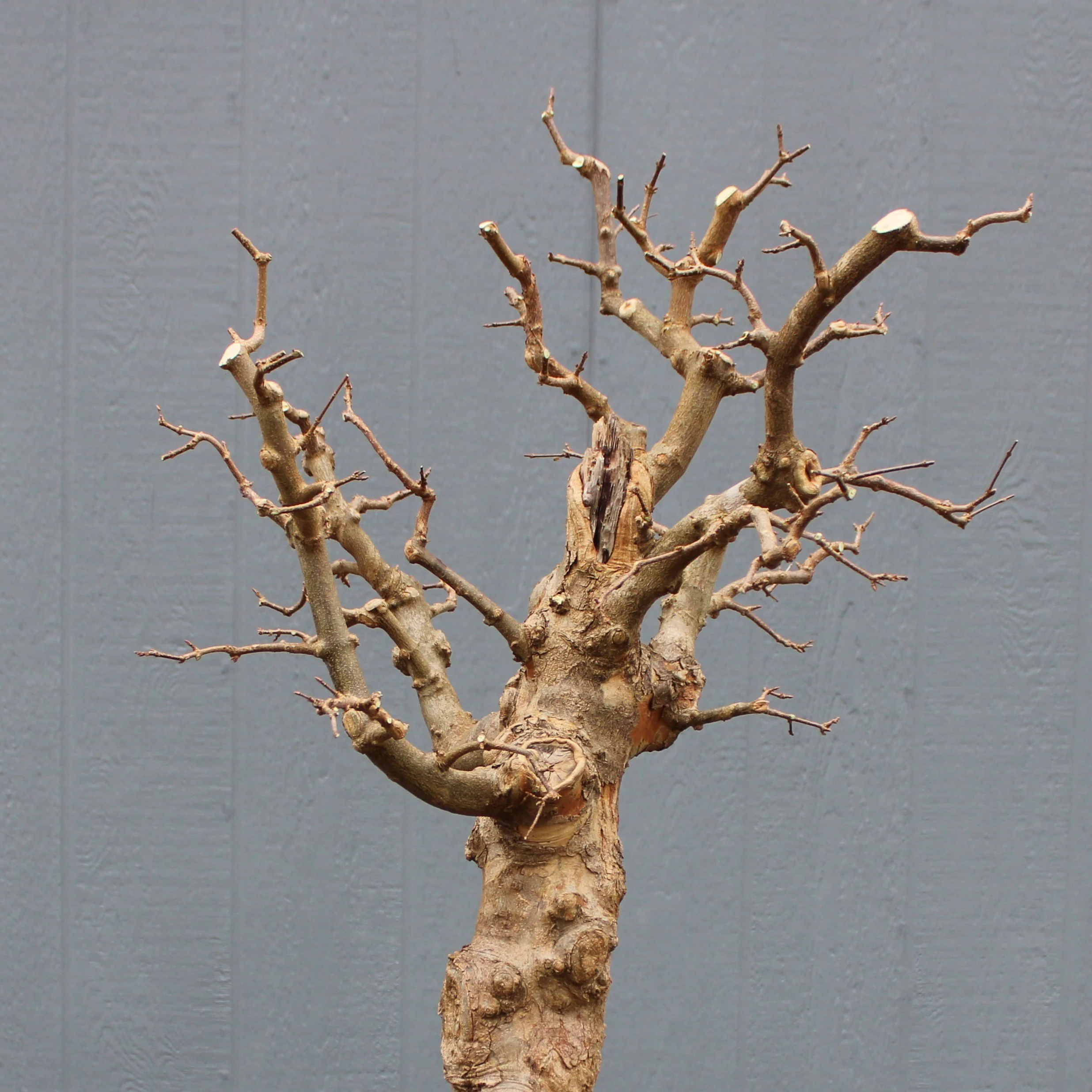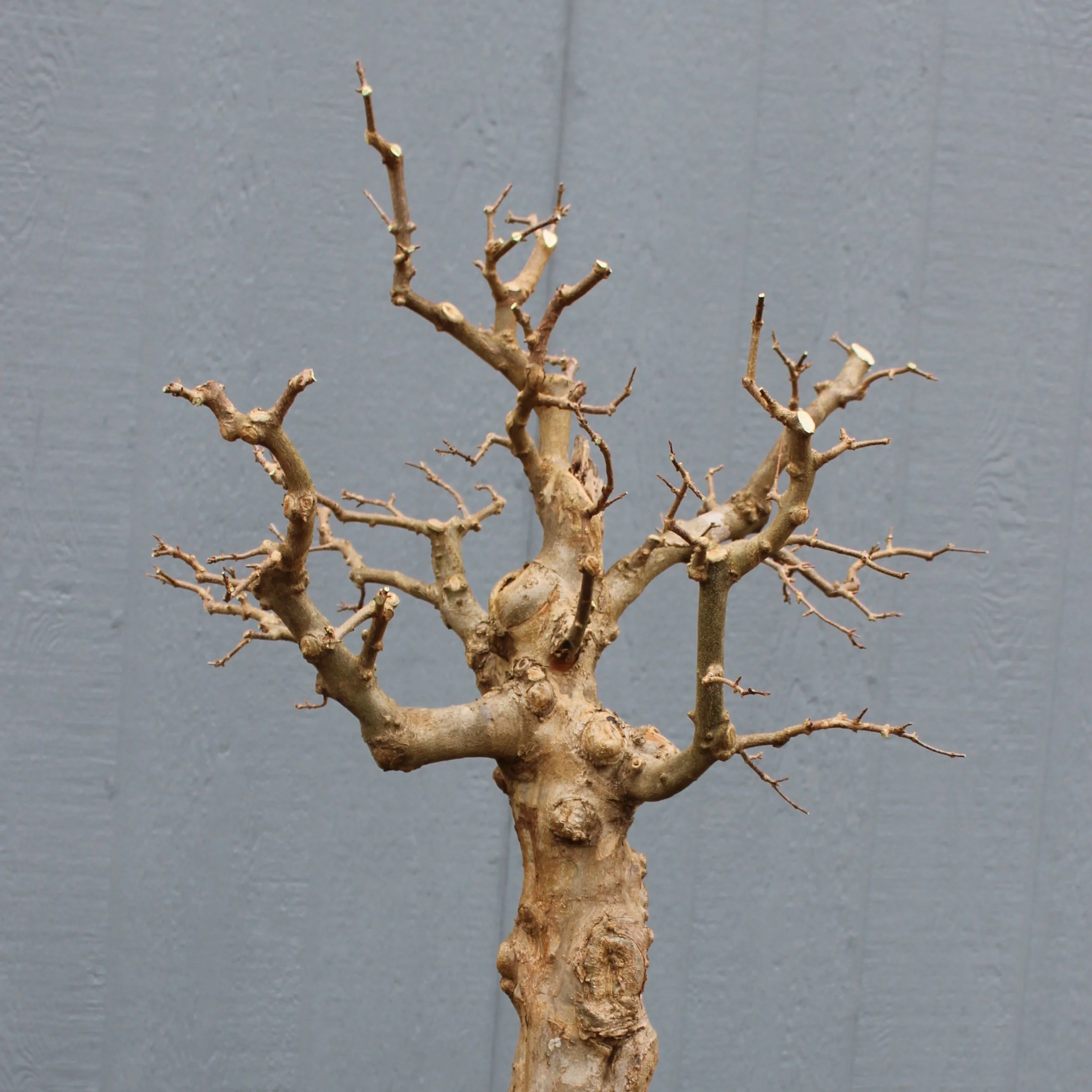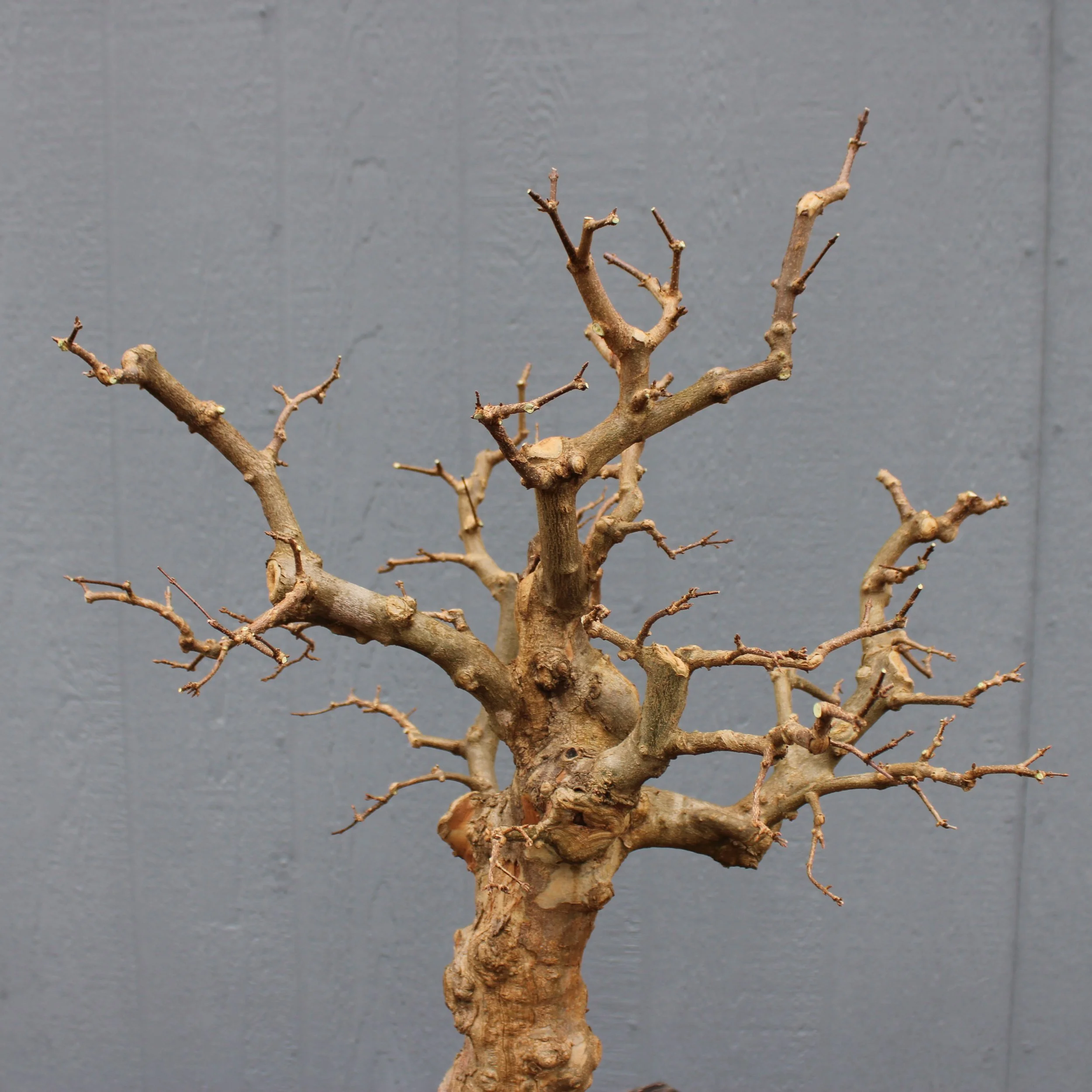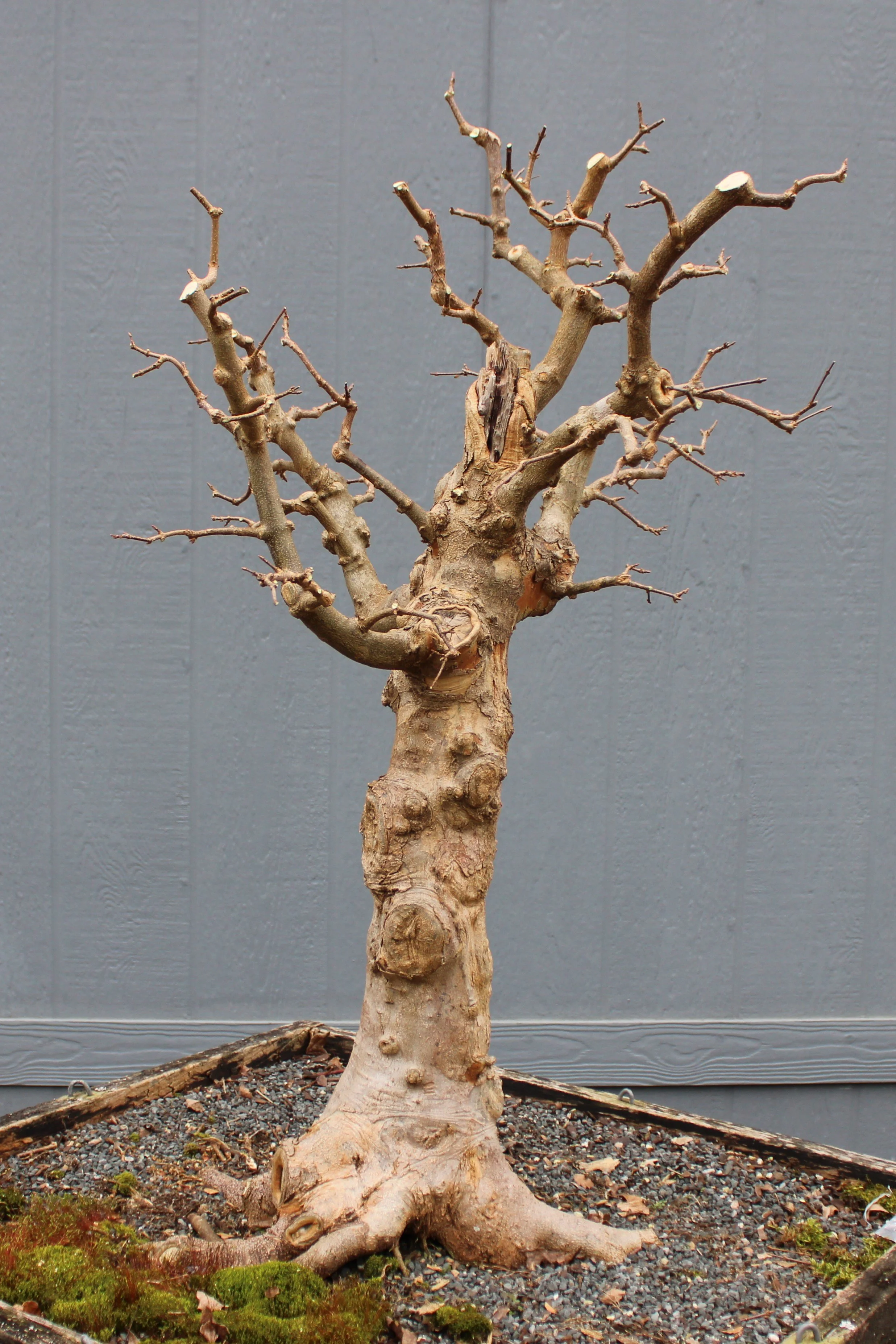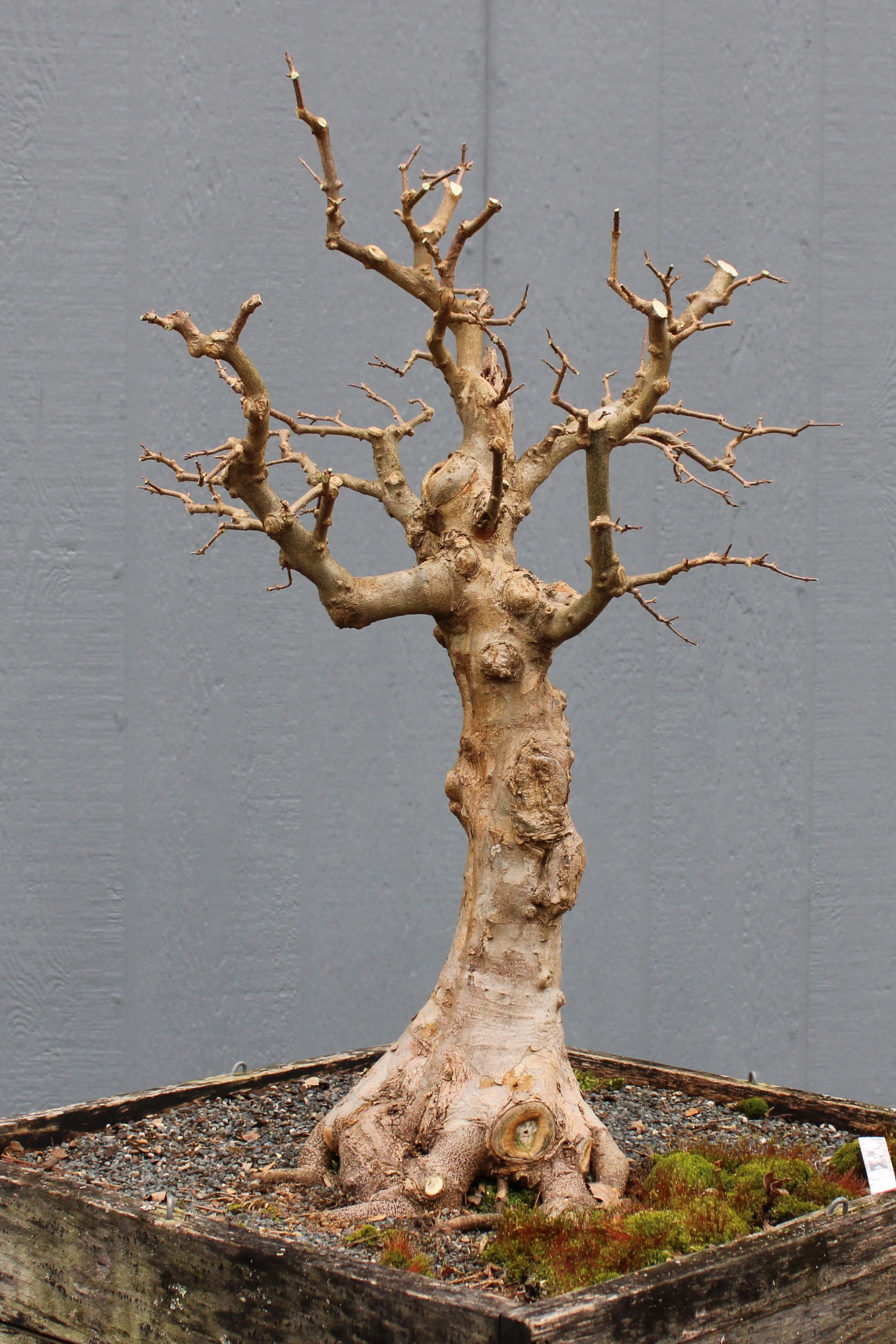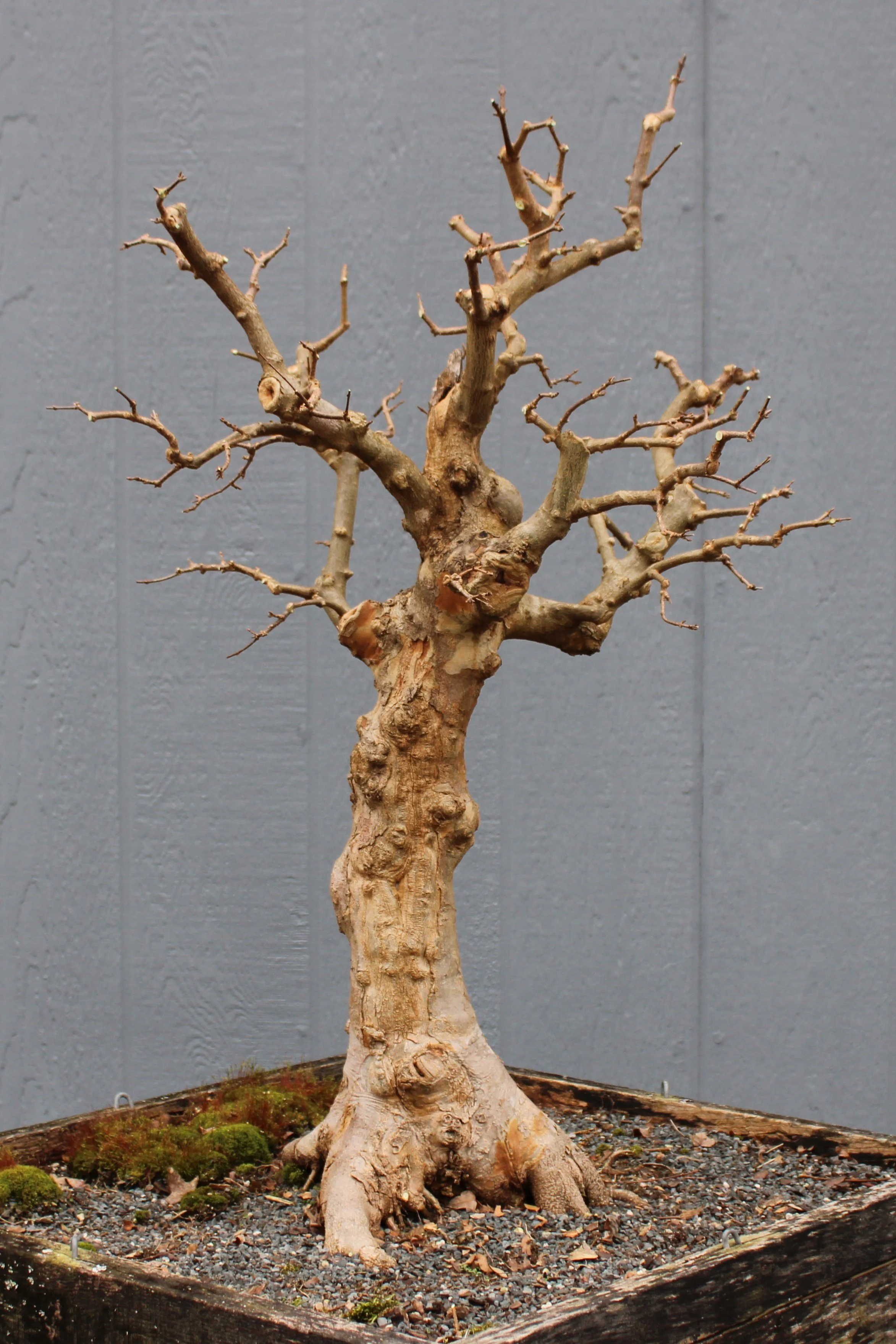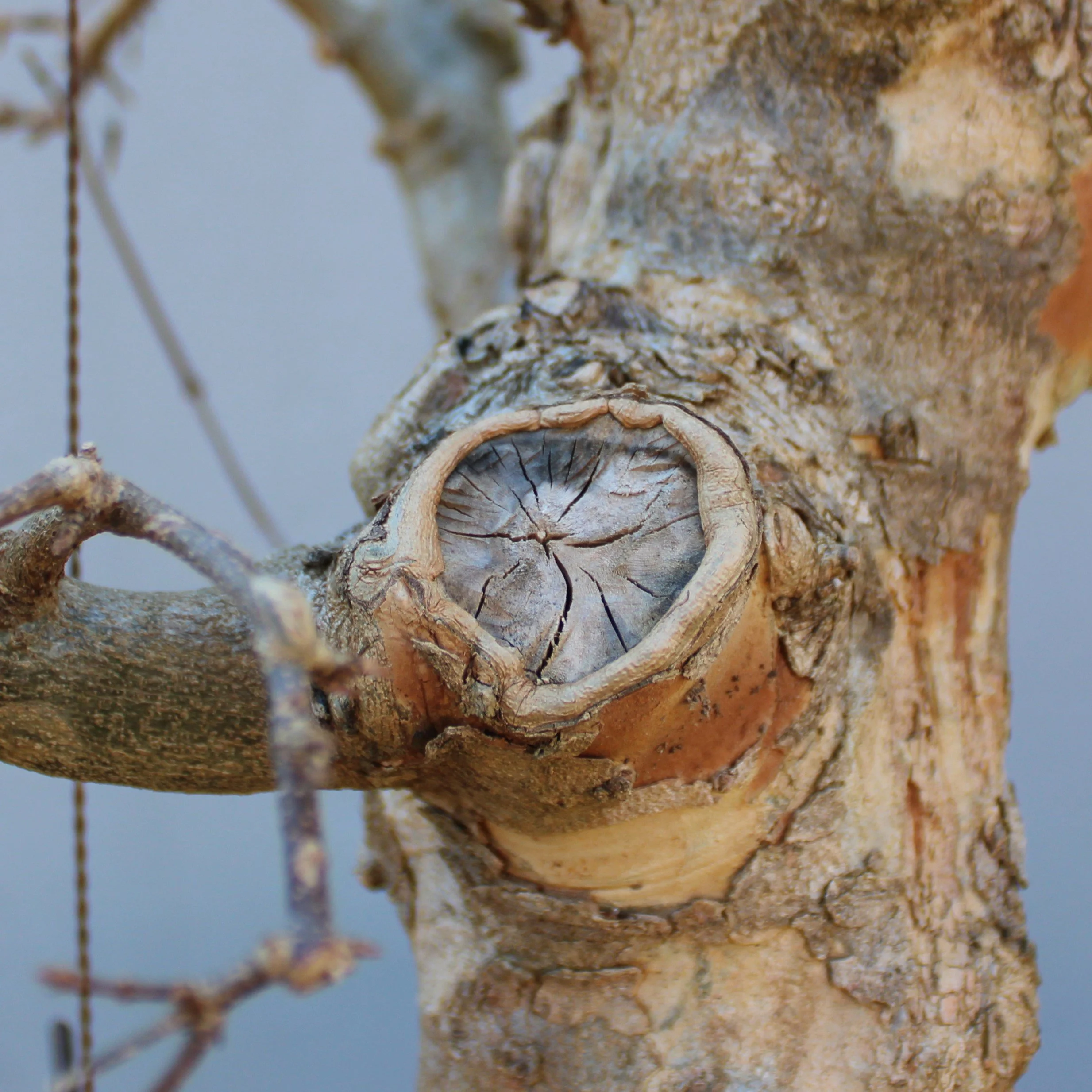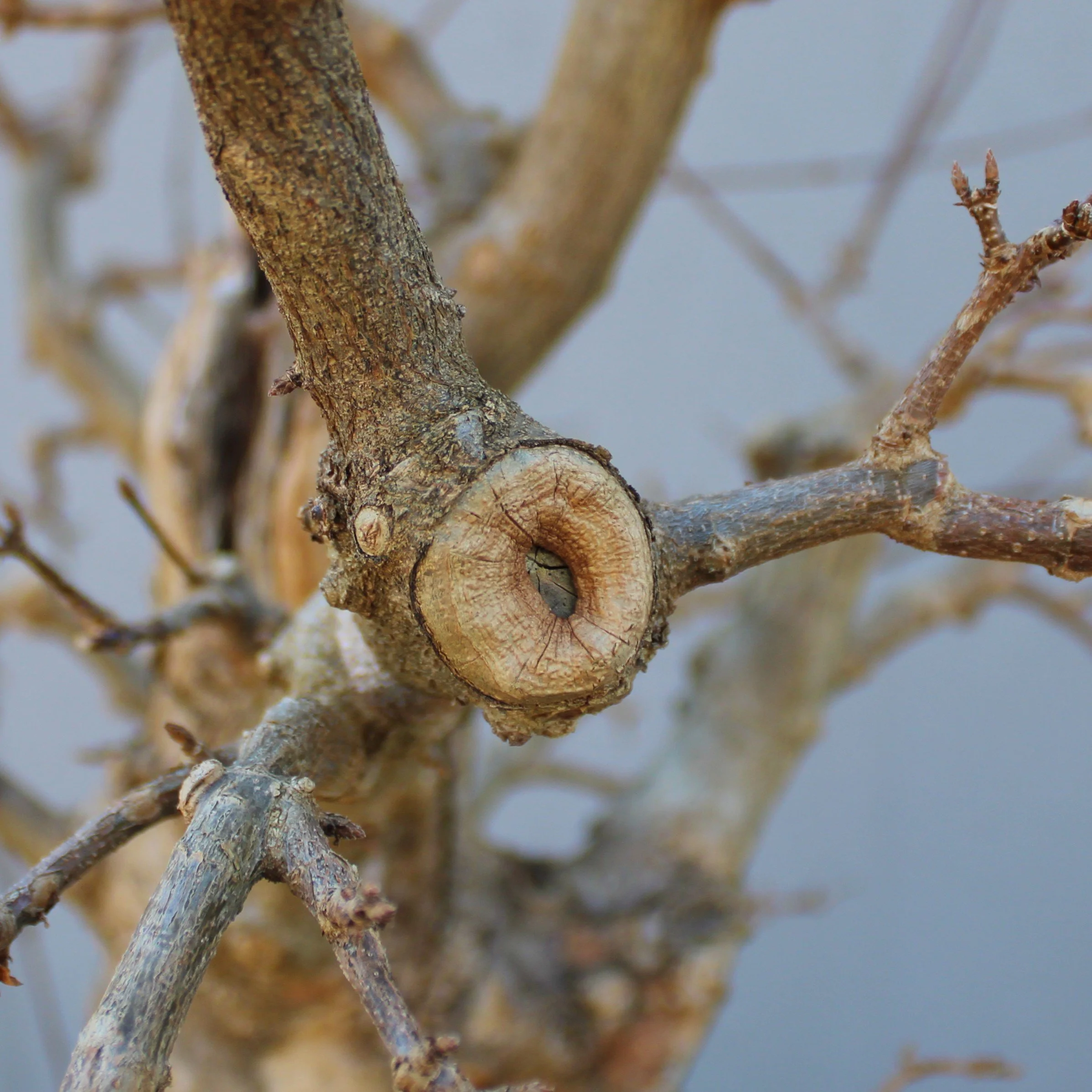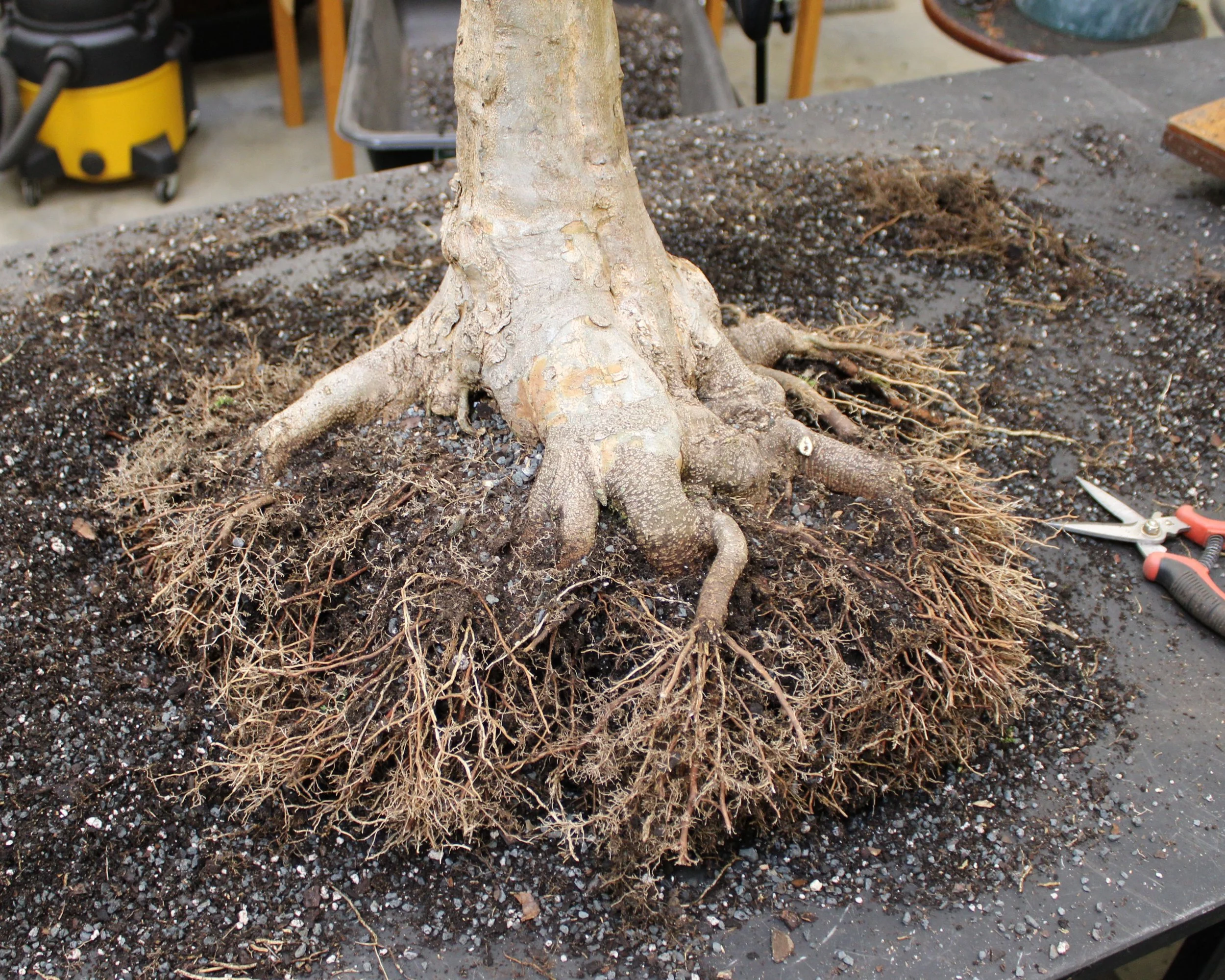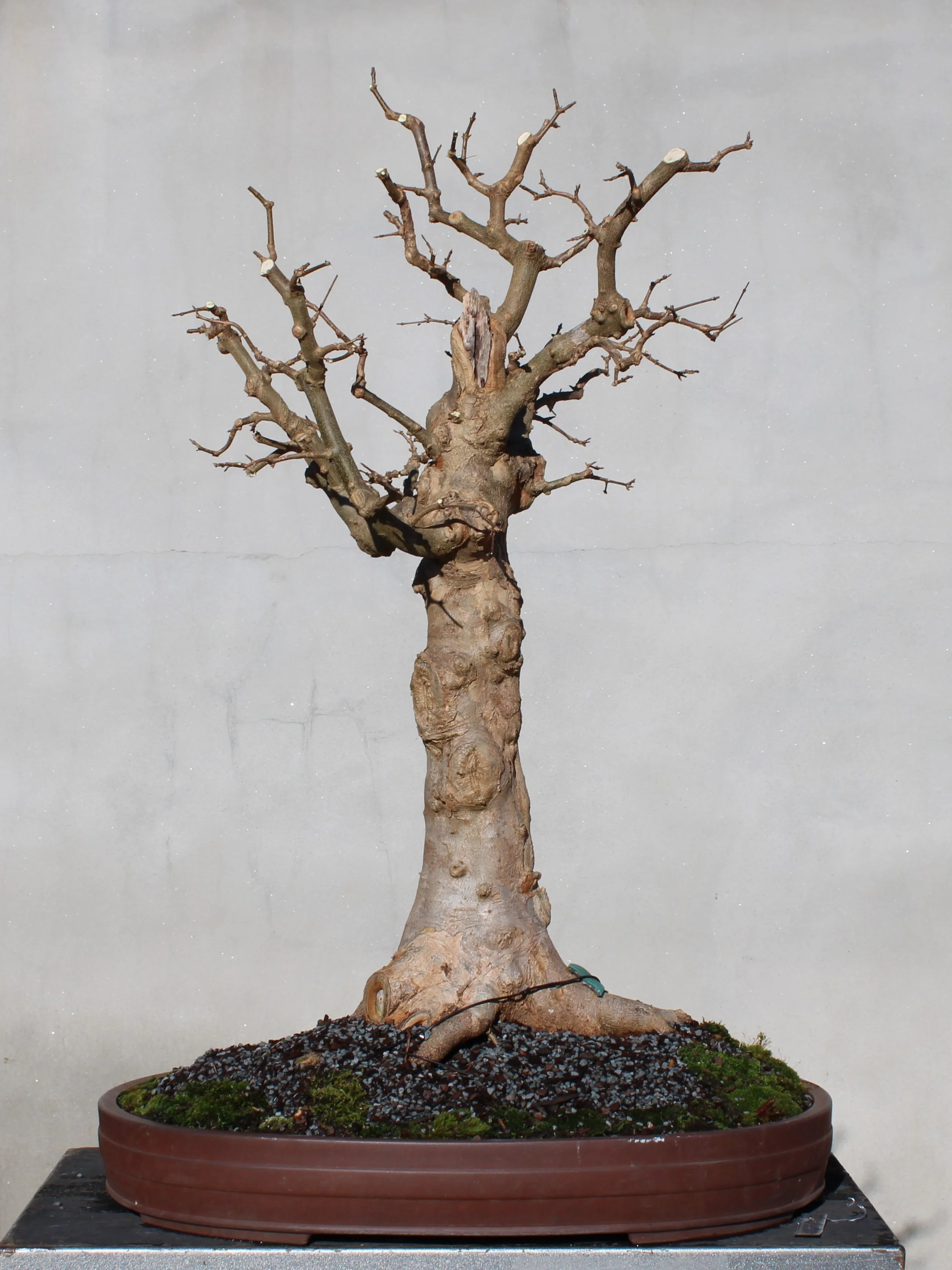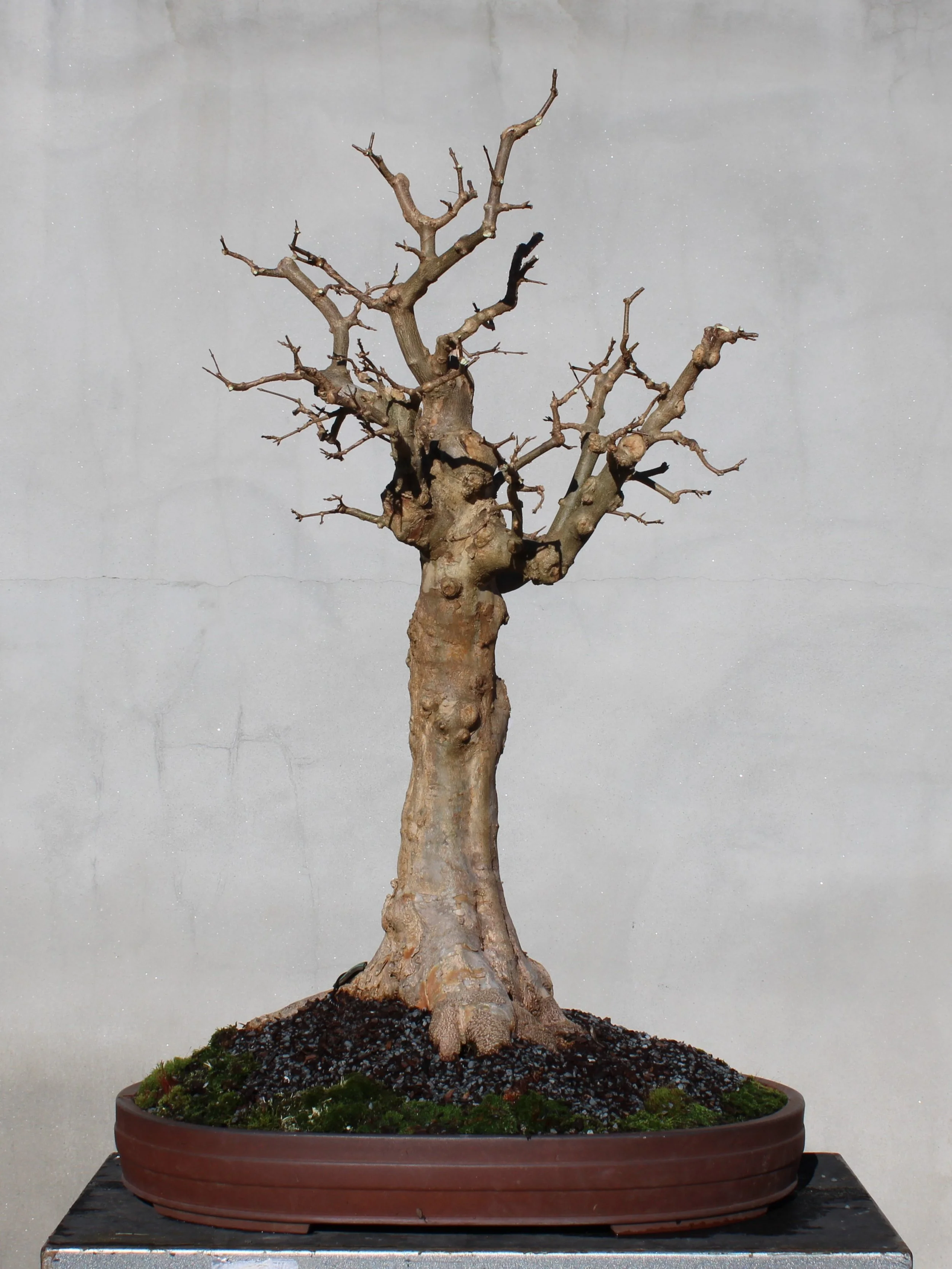Late Winter Work on a Trident Maple
For bonsai growers in this part of the world, at this time of year — the tail end of winter with spring just beginning to nose into the picture, the first order of business is active preparation for the advent of a new growing season. The work that must be done varies depending on species and state of development, but all bonsai trees and trees intended to be bonsai need to be made ready.
What follows is an account of the late winter preparatory work done on a trident maple (Acer buergerianum) in a developmental phase. That is to say, this tree is in training and not yet thought of as a presentable bonsai. This same specimen has twice before been featured in the Curator’s Journal. An early 2022 entry titled Collecting a Field-Grown Maple featured a video of this tree being dug up from a growing bed, transplanted into a large wooden box and given an initial pruning. In August of 2023 another entry, titled Midsummer Work on a Developing Tree, offered a follow-up on the trident maple’s progress. The tree is revisited in this entry, on the cusp of its fourth growing season of bonsai development.
To begin, here are two images showing the specimen at the start of the session:
The maple was thoroughly pruned prior to the growing season in 2024, but was then unintentionally allowed to grow without restraint for the entire year. The result of this freedom was health and vigor, as evidenced by the long, rank branches forming a chaotically random crown. Some shoots took the opportunity to extend more than three feet in length. To be left unmolested for a growing season does no harm to tree in this stage of training, although it does slow down the rate of design development.
The above photos show the maple from two opposite perspectives, chosen because those sides happened to be facing outward when the wooden box in which the tree is planted was squared-up to the camera. No determination has yet been made as to what view of this specimen presents best. The next set of images also depict the maple prior to pruning, this time from four alternative perspectives. The different views have been given a numerical identification for reference purposes, the number having no meaning beyond that:
View 1
View 2
View 3
View 4
All the branching produced during the 2024 growing season is potentially useful. Not all of it will be used, however, and those branches allowed to remain will be made dramatically shorter. Deciding which new branch shoots are useful and which are excess that should be removed can be daunting when a grower confronts such overgrowth. An important factor in determining how to proceed is the method the grower intends to use to continue developing the branches.
One possibility involves the use of training wire, which allows the grower to take a long, straight shoot that still has flexibility and give it more interesting movement. The shoot is left long and wrapped in wire, then the grower twists and bends the shoot into a desired shape. The wire is left on as long as possible without doing damage and when it is removed the shoot remains in the shape it was given. Most bonsai are shaped at least in part through the use of training wire because it accelerates the process of building structure.
Another way to shape branching involves a technique known as cut-and-grow. This method builds movement in a branch through a series of pruning cuts made over an extended period of time. It takes longer to build a branch this way, but the resulting shape tends to be more authentic, perhaps because it mirrors the way branches are shaped in nature. Investing a bonsai with an authentic branch pattern is critical to naturalistic bonsai design.
This particular maple has been previously trained using a combination of both the wiring and cut-and-grow methods. On this occasion wire will not be employed, so all pruning decisions are made with the intention of achieving further movement through a series of cuts made in response to subsequent new growth. With that in mind, the following pruning strategy was employed: No shoot should be completely removed on the first pass, but all shoots should be made as short as possible. The determining factor as to how short a shoot might be pruned is the presence of leaf buds. Buds left intact after a pruning cut is made are where the tree will most likely push out new growth. If a shoot is pruned back to a point where no visible leaf buds remain, the shoot will most likely whither and die.
The following sets of images show four different views of the maple’s crown before and after the first round of pruning:
View 1 before
View 1 after
View 2 before
View 2 after
View 3 before
View 3 after
View 4 before
View 4 after
At this stage of the process, no styling decisions have been made. All new shoots have been pruned back to to their first node (nodes are the places on a shoot where buds are located; in the case of maples, each node contains a pair of opposite buds), making them as short as possible. This first pruning pass immediately relieves the confusion of a crown composed of random, rank growth. However, if the maple was allowed to initiate spring growth while in this state the confusion would quickly return. The crown as it appears in the “after” images still has too many remaining points of growth from which vigorous new shoots will emerge. Further reduction is needed.
Most of the older parts of this maple, those that existed prior to the 2024 growing season, were previously selected and managed with the intention that they would form the most basic elements of the tree’s design. This structural core includes the trunk and primary branching (primary branches are those that originate from the trunk). These elements might always be altered, but in this case they will not be. Working off of this established basic framework, the task now becomes building out secondary and tertiary branching (secondary branches emerge from primary branches and tertiary branches emerge from secondary branches). This is how ramification of the crown is achieved. On this specimen, at this point in time, only the very beginnings of secondary and tertiary branches exist. The intention in pruning the new shoots from 2024 is to further extend and develop these elements.
Maples produce new growth in opposing pairs, whether it be pairs of leaves or pairs of shoots. The objective now with this maple, after reducing the length of all new shoots, is further reduction by generally choosing to keep just one or the other of each pair. Or, both shoots in a pair may be eliminated in some cases. Deciding which shoot to keep and which to remove is not arbitrary. The pruning can be done that way, but then the result will also be arbitrary — hit or miss — and much less likely to produce an appealing design. Good design involves intention on the part of the designer.
Which shoot in each pair should be removed? When might it be desirable to eliminate both shoots in certain places? These are design decisions made by the individual grower. The choices made determine the shape of each branch, with the combined effect of the separate branches ultimately contributing to the overall character of the bonsai.
Here are images of the same four views of this specimen as previously presented, revealing the final pruning decisions made in a second pass through the tree’s crown:
View 1 before
View 1 after
View 2 before
View 2 after
View 3 before
View 3 after
View 4 before
View 4 after
Here are full-length images of the same four views of the trident maple at the conclusion of this round of pruning:
View 1
View 2
View 3
View 4
The crown of the tree as it currently exists looks too narrow. The reason for this squeezed appearance is the fact that the primary branches were all shaped to be ascending, based on observation of older deciduous trees growing in the mountain forests of western North Carolina. The fullness of the crown will be achieved over time by the ongoing development of secondary and tertiary branching. It can already be seen that many of the existent secondary and tertiary branches grow in a more horizontal or even descending posture, and that character will be continued in the development to come. When looking at a bonsai-in-training, the viewer should always take into account that what is seen is work in an earlier stage of progress.
This trident maple needs time for more development in areas other than just its branch structure. Many larger pruning cuts have been made in the three years since this specimen was lifted from the growing bed, and the tree is still in the process of covering these wounds in callous tissue. Here are images of three different pruning wounds in various stages of callousing:
A larger pruning wound in an early stage of covering
A smaller wound mostly covered
A smaller wound completely covered
One final task was accomplished in this recent work session. When the maple was collected from the ground it was planted in a large wooden grow box, helping to mitigate the shock of being reintroduced to container culture. After three years in the box the tree was ready to be stepped-down into a smaller container, this time a bonsai pot made of ceramic stoneware. The largest such pot available, an oval measuring twenty four inches by eighteen inches and three inches deep, was not ideally big enough. The maple fit into it, but only barely. Still, it was important to make this move now because a bonsai’s roots also require training and development of ramification. It was time for this specimen to begin acclimating to the more restricted dimensions of a bonsai pot.
The root system of the trident maple, pruned to fit into a bonsai container
Here are two opposite views of the trident maple bonsai-in-training planted in a temporary bonsai pot:
Again, the tree as presented in the above images is no indication of how the fully realized bonsai will be presented. The spacial limitations of the pot combined with the dimensions of the large base of the tree dictated the current placement. Next spring this maple will need repotting once more, and at that time a more appropriately sized container will allow for more exact placement. In all likelihood, the right pot for this specimen will be round so that the bonsai might be presented from multiple different angles.
